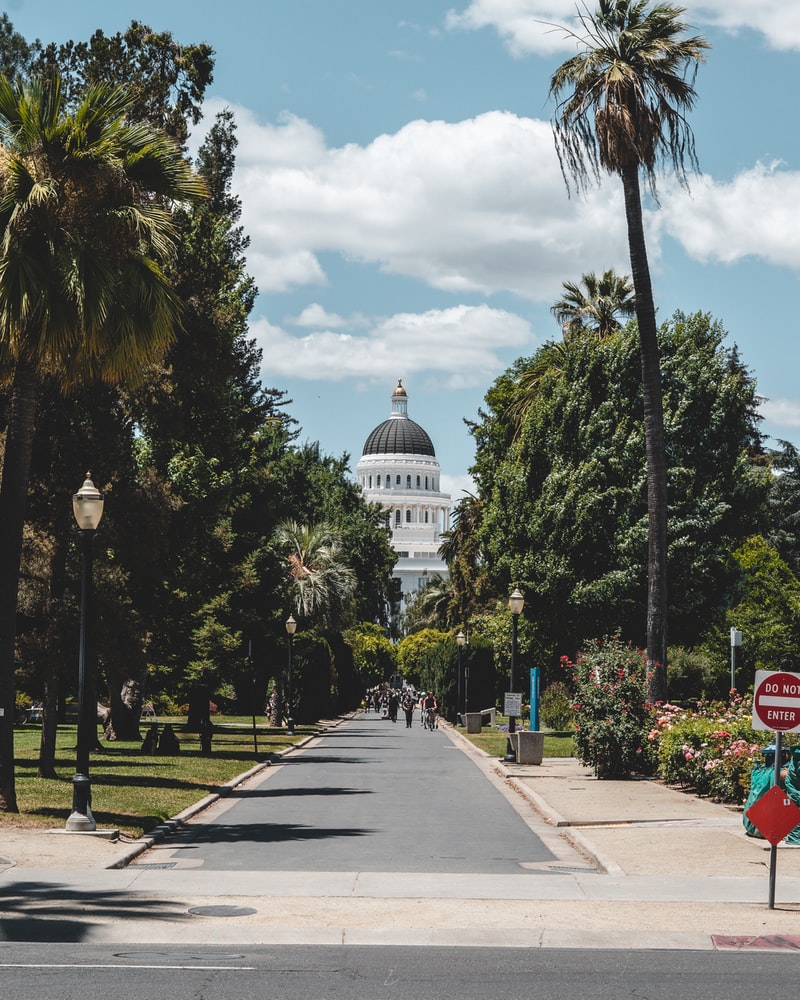In addition to the presidential race, there were 12 statewide ballot measures on the California ballot for the Nov. 3 general election. California and Santa Clara County voted in favor of president-elect Biden at more than a 2:1 ratio, as seen in the chart below. Though Californians overwhelmingly voted for Biden, the ballot measures were decided by much closer margins, suggesting less consensus around state-level progressive policies. By contrast, results from the Stanford community seem to suggest more homogenous political preferences with a significant percentage taking the more progressive side on propositions.
To calculate how Stanford voted, The Daily examined precinct-level voting results from the Santa Clara County Registrar of Voters. Since Stanford’s boundaries do not perfectly align with the boundaries of any set of precincts, we focused our analysis on precinct 2542 as it is entirely contained within the 94305 zip code. The data in this story are unofficial results released on Nov. 10 at 5:00 pm PT with an estimated 92% of ballots counted.
It is important to note that the 1,341 ballots cast in precinct 2542 may not be fully representative of Stanford’s 18,660 students and faculty members. Only a fraction of the undergraduate population was invited to campus due to the COVID-19 pandemic and several faculty members and graduate members live off campus. Students on campus may also be registered to vote in their home precincts rather than at Stanford.
Data from the first Stanford Community Survey in May aligned with the trend towards more progressive preferences found in the voting data. A vast majority of the 830 students sampled identifying as liberal or very liberal, with 7% self-describing as socialist and only 5% identifying as conservative or very conservative.
Stanford’s liberal leanings and receptiveness to diversity in thought have been a focal point of recent campus discourse around the Hoover Institution. Faculty members called for a re-evaluation of Stanford’s relationship with the Institution, in part due to controversy around Hoover senior fellow Scott Atlas’ advising the president on COVID-19. The data provide a glimpse into voting preferences of the many students and faculty members living on campus.
The Stanford community’s political beliefs can be characterized by vote shares on the various California propositions, which spanned issues from affirmative action to gig worker regulations and commercial property tax laws. A few contentious propositions that were close votes at the state level were overwhelmingly supported or opposed by the Stanford community as seen in the charts below.
Proposition 14 would issue $5.5 billion in bonds to fund stem cell research at the California Institute for Regenerative Medicine. 76.24% of Stanford voters supported Proposition 14. By contrast, the ballot measure is only narrowly passing at the county and state levels with 55.76% and 51.1% of the vote, respectively. Robert Klein ’67 J.D. ’70 initiated Proposition 14 and also served as the first chairperson of the institute. Klein has been instrumental in the campaign in favor of Prop. 14, contributing $5.83 million.
Stanford also supported Proposition 15, with 89.88% voting in favor of the proposition’s tax reforms on commercial properties. The state of California narrowly voted against the bill, with 48.2% in favor. Prop. 15 would amend taxes for most commercial properties, having owners pay based on the property’s present market value rather than the original purchase price. The proposition was supported by Governor Gavin Newsom (D), teachers’ unions and the Chan Zuckerberg advocacy group. It was opposed by the Republican Party of California and a coalition of businesses criticizing its purported financial toll during the pandemic.
71.54% of Stanford voters supported Proposition 16, but it failed in California by 13 percentage points. Prop. 16 would seek to repeal a 1996 ballot initiative banning affirmative action in public employment, education and contracting. Stanford activists were disappointed by the failure of Prop. 16, considering affirmative action integral to making higher education more accessible to marginalized communities. As a private university, Stanford was not affected by the 1996 ban and continues to consider race and ethnicity during the admissions process.
Proposition 22 passed with 58.5% of the vote at the time of publication. By contrast, only 26.03% of voters in precinct 2542 supported Prop. 22. By classifying drivers for rideshare apps as independent contractors, Prop. 22 could prevent drivers from receiving overtime pay and limit access to healthcare benefits, paid sick leave and unemployment insurance. Uber, Doordash and Lyft were major sources of funding for a controversial $203 million campaign that supported Prop. 22.
Contact Kaushikee Nayudu at knayudu ‘at’ stanford.edu.
